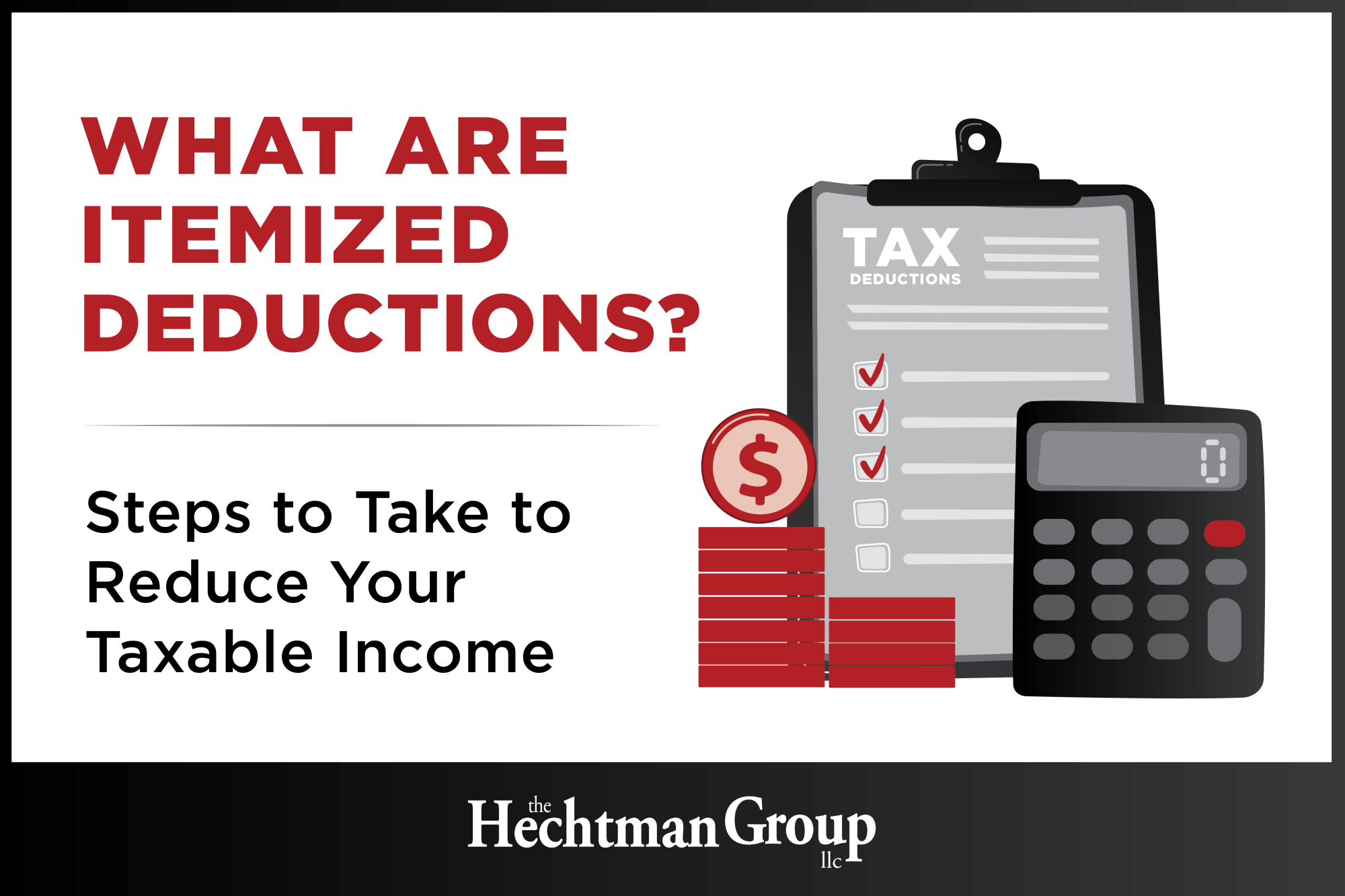
Steps to Take to Reduce Your Taxable Income
Navigating the complexities of tax deductions can be hard, especially if you’re not familiar with the details of tax preparation. While a tax preparation firm like The Hechtman Group can guide you through the process, it’s still important to understand deductions because they can significantly reduce the taxable income you report to the IRS. Let’s break down the basics of deductions into two main methods—itemizing and standard deductions — with simple tips to help you track your deductions throughout the year.
Standard Deduction vs. Itemized Deductions: What’s the Difference?
When it comes to deductions, taxpayers have two main options: standard or itemized deductions. The standard deduction is a predetermined amount set by the IRS that you can subtract from your adjusted gross income to reduce your taxable income. On the other hand, itemized deductions allow you to list specific expenses incurred throughout the year, such as medical expenses, mortgage interest, and charitable donations, to lower the amount you pay on your taxes.
The standard deduction amount varies depending on income, age, filing status, and whether you’re blind. It’s adjusted annually for inflation and changes in the economy. However, certain taxpayers cannot use the standard deduction, such as those who are married but filing separately and have a spouse who itemizes deductions.
Itemized Deductions: What Expenses Can You Deduct?
Itemized deductions cover many expenses, including state and local taxes, mortgage interest, charitable donations, etc. You may benefit from itemizing if you have significant uninsured medical expenses, paid mortgage interest or property taxes, or made substantial contributions to qualified charities.
Tips for Tracking Your Deductions Throughout the Year
Keeping track of potential deductions throughout the year can make tax season more manageable. Here are some tips to help you stay organized:
Maintain Detailed Records: Keep thorough records of all deductible expenses, including receipts, invoices, and statements. It can be a filing system or something as simple as a shoe box or empty shipping box. The key is to save your documents.
Use Technology to Your Advantage: Consider using apps designed for expense tracking. If you have a computer, Microsoft Excel is a free and easy way to track expenses. If you do not use these programs, purchase an old-fashioned ledger book at a discount store and manually write down your expenses.
Familiarize Yourself with What Can Be Deducted: Examples of expenses that may be deducted from your income tax include:
- Mortgage interest
- State and local taxes
- Charitable donations
- Medical and dental expenses
- Home office expenses (for self-employed individuals)
- Education expenses (such as tuition and student loan interest)
- Business expenses (for self-employed individuals)
- Contributions to retirement accounts (such as IRA or 401(k) contributions)
- Casualty and theft losses from a federally declared disaster
- Job-related moving expenses (if you meet specific criteria)
- Health savings account (HSA) contributions
Rather than assuming certain expenses are not tax deductible, assume that they are and let your CPA or tax advisor tell you what expenses are valid. This approach may result in more deductions than you expected.
Familiarizing yourself with the basics of itemized deductions and the standard deduction, in addition to keeping good records of expenses, can successfully reduce your taxable income and potentially lower your tax bill.
Be proactive throughout the year to prepare for your next tax return. Contact The Hechtman Group to set up a tax planning and strategy meeting and stay current on new tax laws that may affect you. Contact us today at (847) 256-3100 or email info@thehechtmangroup.com to schedule an appointment.